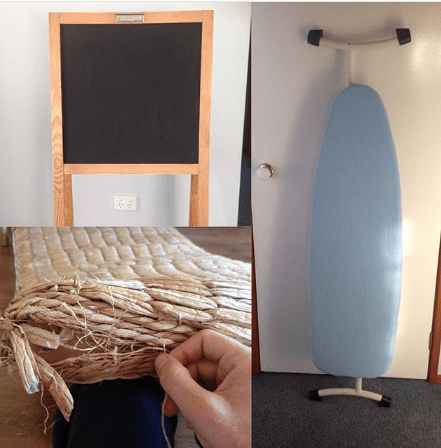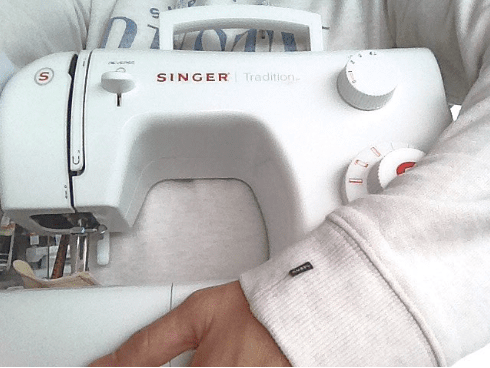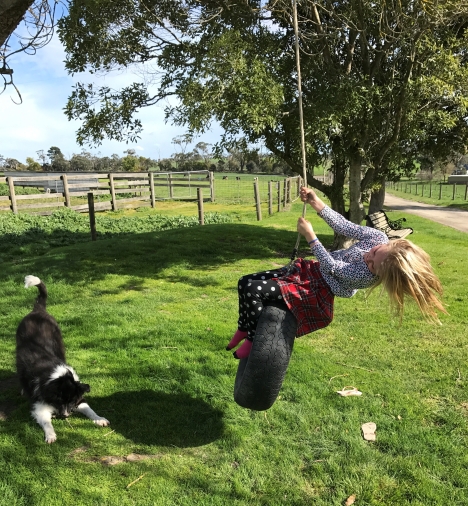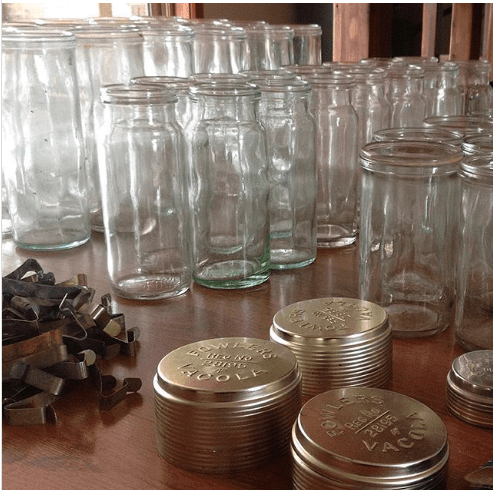Reuse is a really smart way to reduce waste because it has more benefits for you and for the environment than recycling does.
I often see people use the term ‘recycled’ to describe something that has been ‘reused’, when actually they are two different things. Reuse involves using something again for its original purpose or for a different function, whereas recycling involves breaking down used items to make raw materials for the manufacture of new products.
Recycling is great but it uses more time, money, energy, and resources than reusing does, therefore, reuse sits above recycling on the waste hierarchy as the more important and ecofriendly practice for reducing waste.

The benefits of reusing for you are that reusable items often end up cheaper than the number of single use items it replaces, you will find yourself with less disposal needs and costs, some well-crafted items appreciate in value, you have opportunity to connect with your community, express your creative side, learn new skills and knowledge around repairing and refurbishment, and help create sustainable jobs.
Reuse is one of the most enjoyable things I do each day, so here are seven smart ways you can reuse every day too.
1. Repair and Maintain
Sew that button back on, stitch up the tiny tear, service your machines, sand back the coffee table, glue a toy back together – most of the time you will save money and time compared to hitting the shops for a replacement.

Not everything goes to plan, though. For example, Christmas lights were left behind on our new house that weren’t working because of broken wires. I re-joined the wires which worked! But only for about three seconds because I think some of the lights were sitting in a gutter of water and that may have caused a fuse to blow. I’m kicking myself that I didn’t think to pull them all out of the gutter first. I thought the fix would be as simple as replacing the fuse but the lights seem to be designed to prevent access to the fuse box! I’m not giving up yet though, so if anyone knows anything about fixing Christmas lights, please contact me!
Part of the reason I’m not giving up is because I want to learn more about how things work to help me in future situations and to pass this knowledge on to my kids. Past experience has also shown me that I almost always find a solution in the end, we just have to accept that learning new things can take some time and grit.
However, we can’t do everything ourselves all the time and I definitely don’t expect myself or others to try to do that when we can support others in our community who are passionate about providing repair services or teaching the art of DIY maintenance. Examples include Men’s Sheds, Repair Cafes, Neighbourhood Houses, and various businesses offering maintenance and repair services.

2. Upcycle (repurpose)
The sky’s the limit when it comes to upcycling – an old gumball container could become a fish tank, pallets can become furniture and pretty much anything can become a planter!
Examples of upcycled things around my home include turning unwearable clothing into fab cushion covers and hair bands, a tyre into a swing, using glass jars for vases, food storage, keeping craft goodies tidy and spare screws organised.

3. Change from single use to multiple use
There’s more you can swap from single use to multiple use than just coffee cups, produce bags, cutlery and straws.
Swap out your single use batteries for rechargeable batteries and save waste, as well as the effort of responsible recycling.
Printer ink cartridges, white board markers, and pens all have refill options.
The other thing we can do, is support businesses and programs where you can return packaging for reuse and support the laws and regulations needed to make this more common.
Read next: Bring Your Own: The Basics and What The Law Says About Using Your Reusable Containers
4. Use secondhand
Let family and friends know you are happy to accept hand-me-downs. Make sure you have open conversations about this and know when to say ‘no thanks’ so you don’t fill your home with their clutter and stress yourself out – I’ve been there! I’m also conscious of this when passing things on.
Choose to own less and rent things from businesses or your peers, or you could just ask to borrow something. Examples include libraries, toy libraries, tool libraries, and renting cars, bikes, caravans, and clothing. The list of rentable things seems to be growing a lot.
You can also buy second hand items through online marketplaces like eBay, Freecycle, Gumtree, and Facebook’s Buy Swap Sell groups. And don’t forget good old fashioned garage sales, farm clearance sales, swap meets, opportunity shops, and tip shops.
You might even be able to scavenge a few useful things here and there, like the old gate I found and put to use in my vegetable garden.

5. Buy wisely – choose well, make it last
My home is a mixture of reused, upcycled, second hand, and new-bought quality items that can be used and reused for a long time. I often think about the lifespan of products and which companies are making their products to last. Usually, it’s the big ticket items like whitegoods and our ride-on lawn mower that we’ve decided to buy new because this allows us to be sure about the resource efficiency of the goods and the maintenance and repair history. We also know we are going to have the goods until they can’t be repaired and must be recycled. I despise fast furniture and the disposal of household items to make room for new trends.
If buying clothing, you might want to consider if the item is a classic you can wear season after season and whether it’s well made to last.
Another consideration when buying new is to support businesses reusing materials in their products. My kitchen table, bookshelf and desk were bought new 12 years ago but are made from reclaimed timber. And finally, support businesses with takeback programs to reuse parts.

6. Use your leftovers
Food should be valued as much as anything else in your home, if not more. If you end up with leftovers and scraps make sure you reuse them before they spoil. Either have the same meal again or turn the leftovers into a new meal or staple product like stock, then pop the remains into the compost or give to pets.
Read next: My Zero Food Waste Experiment
7. Find alternatives to throwing away
Sometimes it’s just time to part ways with some of your stuff, but this is also an opportunity to ensure things are reused.
Make some cash on your pre-loved stuff by selling it through online markets or host a garage sale. I organise the Poowong Pickers Festival town garage sale trail, but for those of you unable to travel to Poowong, you could get involved in the garage sale trail fun on the 21st and 22nd October 2017 by visiting The Garage Sale Trail to find sales and events near you. I’m a proud ambassador of the initiative again this year!
Ask your friends or family if they want first pick of any of the goodies you’re planning to send on their way.
There are also many places where you can donate usable items. Charities like Vinnies, the Salvos and The Smith Family do wonderful things with what we donate, but make sure you donate responsibly. Charities spend millions of dollars every year disposing of stuff that’s not fit to be reused.
Then there are charities like Fair Game and Boots for Remote Kids who take your old sports gear and Dress for Success which helps women to achieve economic independence by providing professional clothing and more.
You could also ask about giving kid’s books or toys to your local child care centre, kindergarten or doctor’s surgery

Us RUDE [reusers (and repairers) of unloved discarded excess] Guys get to reuse stuff from all sorts of places, including hand-me-downs and hand-me-ups from adult children big on consumption. We are relating to your message. Shared your blog post to Mend It, Australia. Thank you for sharing and let us know when a Mend it type event is down your way. We are keen to pop in and share our skills.
LikeLiked by 1 person
Thanks guys, will do. 😃🙏🏻
LikeLiked by 1 person
So many ideas! I love how reusing encourages creativity (and saves money).
LikeLiked by 2 people
Great advice…thanks for sharing.
LikeLiked by 2 people